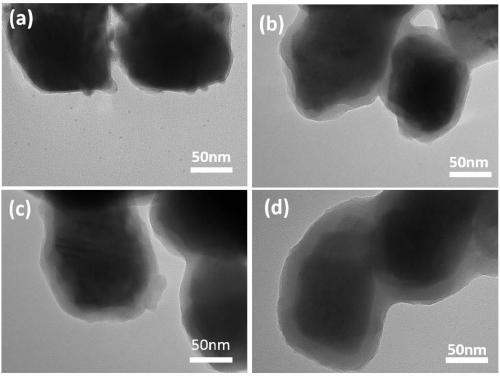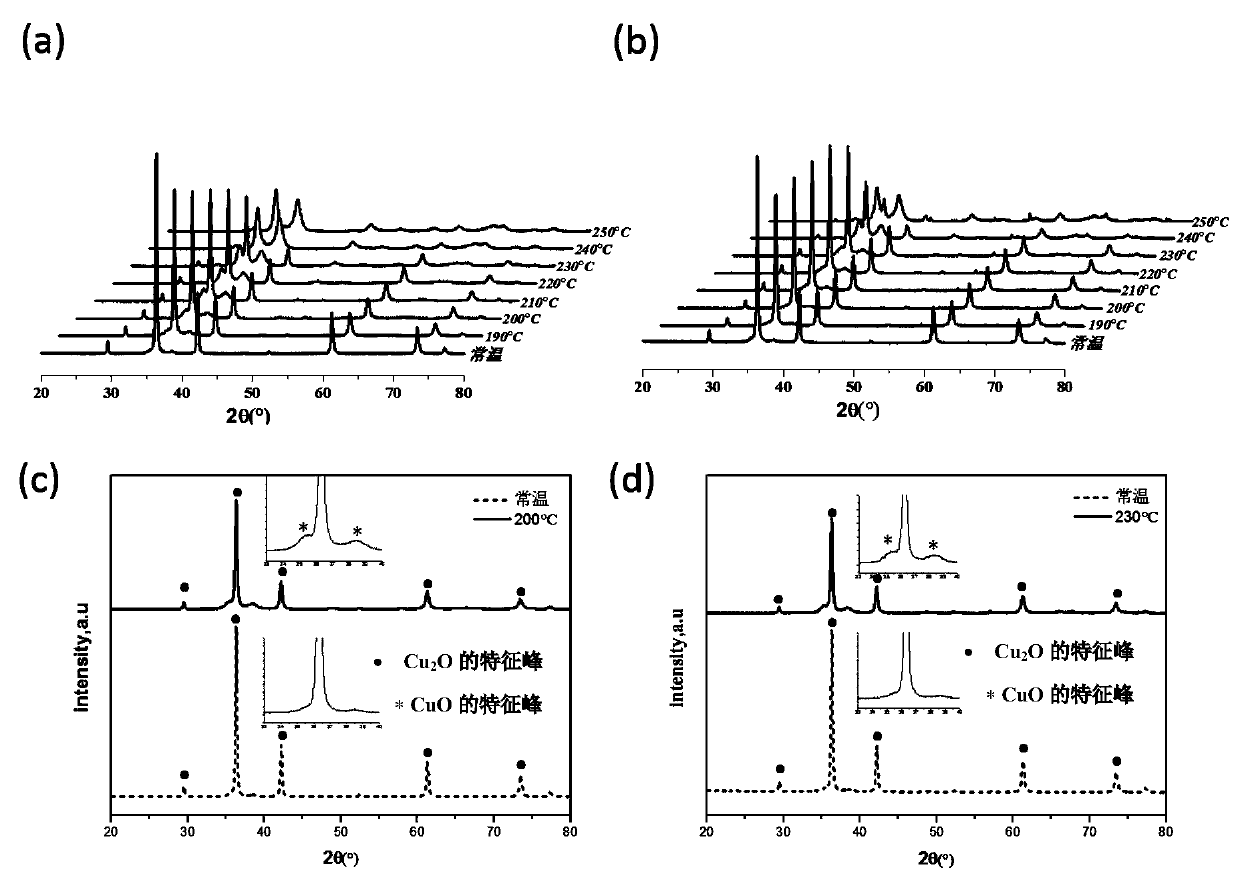Organic-inorganic hybrid antibacterial nanomaterial, and preparation method and use thereof
A technology of nanometer antibacterial material and inorganic antibacterial material, which is applied in the field of organic-inorganic hybrid nanometer antibacterial material and its preparation, can solve the problems of limited processing temperature, reduced antibacterial performance, easy to be oxidized, etc., so as to improve the processing temperature and facilitate uniformity. Dispersive, inexpensive effects
- Summary
- Abstract
- Description
- Claims
- Application Information
AI Technical Summary
Problems solved by technology
Method used
Image
Examples
Embodiment 1
[0055] The preparation of organic-inorganic hybrid nano-antibacterial material, wherein cuprous oxide is an inorganic antibacterial material, and the polymerization product of polyphenolic compound (catechol) and polyamine compound (tetraethylenepentamine) is an organic antibacterial material, said The organic antibacterial material is coated with the inorganic antibacterial material.
[0056] Add 100mL of Tris-HCl solution with a pH of 8.5 into a 150mL single-mouth bottle, and then add 71.5mg of nano-cuprous oxide powder, wherein the molar concentration of the nano-cuprous oxide dispersion system is 5M, put the dispersion system in an ultrasonic wave for 30min, Nano-cuprous oxide is dispersed uniformly in this solution, add 5.5mg pyrocatechol, stir reaction 30min with the stirring speed of 400rpm, then add 9.5mg tetraethylenepentamine (the mol ratio of pyrocatechol and tetraethylenepentamine is 1:1). Continue to stir the reaction at room temperature. When reacting for 4h, 8h...
Embodiment 2
[0065] Add 100mL Tris-HCl solution with a pH of 8 into a 150mL single-mouth bottle, then add 100mg of nano-cuprous oxide powder, put the dispersion system in an ultrasonic wave for 30min, so that the nano-cuprous oxide is evenly dispersed in the alkaline buffer solution , wherein the molar concentration of nano-cuprous oxide dispersion system is 7M, add 9.5mg dopamine hydrochloride, stir and react with a stirring speed of 400rpm for 30min, add 2.6mg diethylenetriamine (the molar ratio of dopamine hydrochloride and diethylenetriamine The ratio is 2:1). React at room temperature for 6 h, centrifuge at 12,000 rpm to obtain a dark green suspension, wash with deionized water three times, and collect the sediment after freeze-drying. The thickness of the shell layer in the prepared organic-inorganic hybrid nano antibacterial material, that is, the coating layer is 20-30nm.
[0066] For the product prepared in Example 2, its normal temperature XRD spectrum and variable temperature X...
Embodiment 3
[0068] Add 125mL of Tris-HCl solution with a pH of 8.5 into a 150mL beaker, then add 178.8mg of nano-cuprous oxide powder, put the dispersion system in an ultrasonic wave for 30min, so that the nano-cuprous oxide is uniformly dispersed in the solution, and a dispersed Liquid A. 25 mL of Tris-HCl solution with a pH of 8.5 was added into a 50 mL beaker, and then 13.8 mg of catechol was added, and the reaction was stirred for 30 min to obtain solution B.
[0069] 3-1) System: Add 40mL of Tris-HCl solution with a pH of 8.5 into a 100mL beaker, then add 5mL of A dispersion and 5mL of B solution respectively, stir for 30min, add 4.7mg of tetraethylenepentamine, of which, inorganic antibacterial The molarity of the material was 1M.
[0070] 3-2) System: Add 30mL Tris-HCl solution with a pH of 8.5 into a 100mL beaker, then add 15mL of A dispersion, 5mL of B solution, stir for 30min, add 4.7mg of tetraethylenepentamine, of which, inorganic antibacterial The molarity of the material was...
PUM
| Property | Measurement | Unit |
|---|---|---|
| Thickness | aaaaa | aaaaa |
| Thickness | aaaaa | aaaaa |
| Thickness | aaaaa | aaaaa |
Abstract
Description
Claims
Application Information
 Login to View More
Login to View More - R&D
- Intellectual Property
- Life Sciences
- Materials
- Tech Scout
- Unparalleled Data Quality
- Higher Quality Content
- 60% Fewer Hallucinations
Browse by: Latest US Patents, China's latest patents, Technical Efficacy Thesaurus, Application Domain, Technology Topic, Popular Technical Reports.
© 2025 PatSnap. All rights reserved.Legal|Privacy policy|Modern Slavery Act Transparency Statement|Sitemap|About US| Contact US: help@patsnap.com



